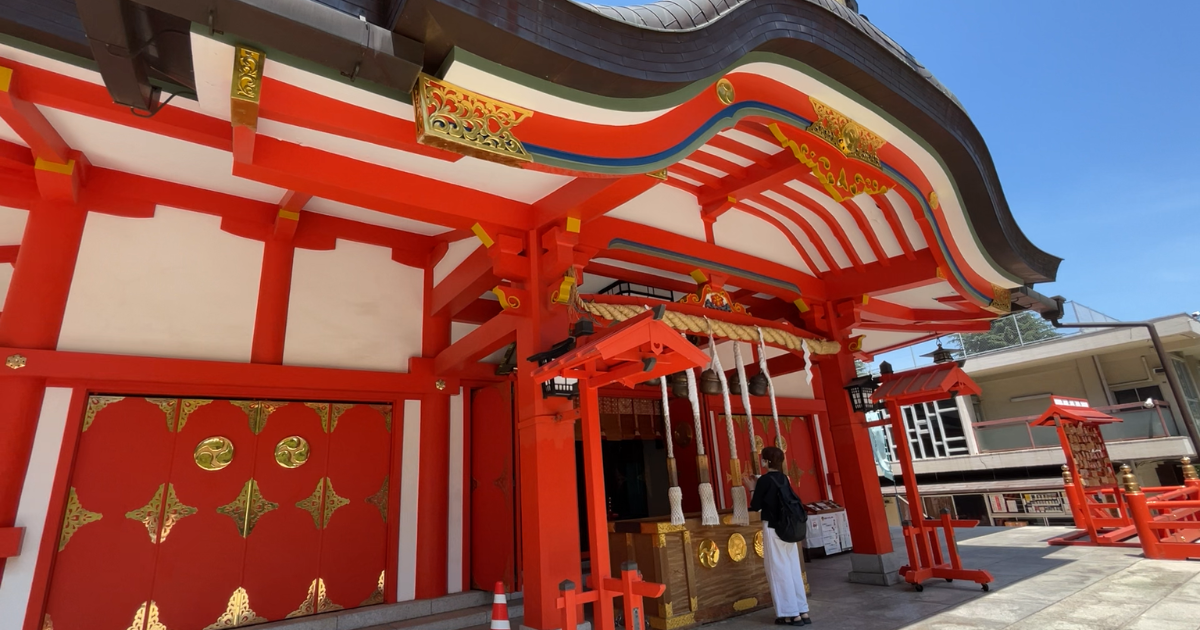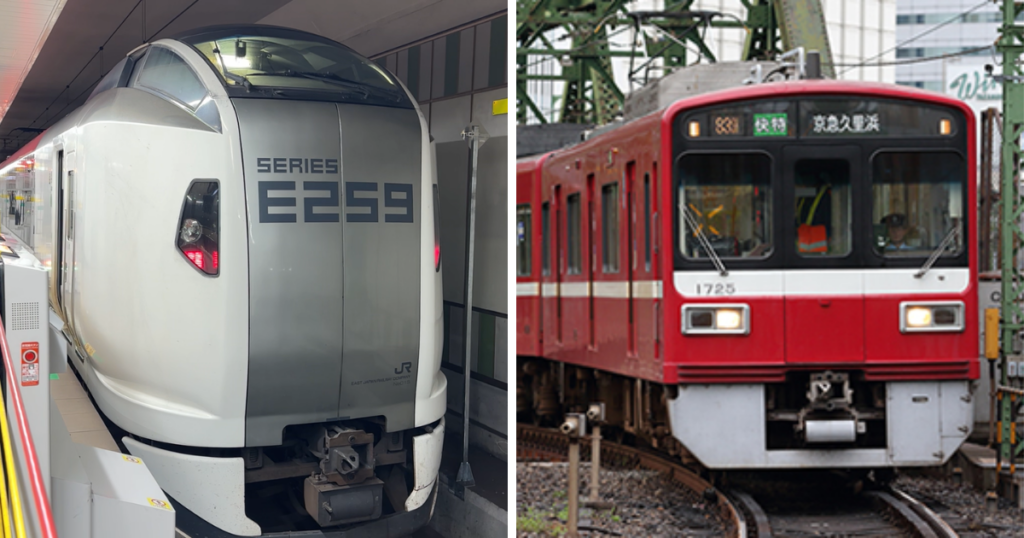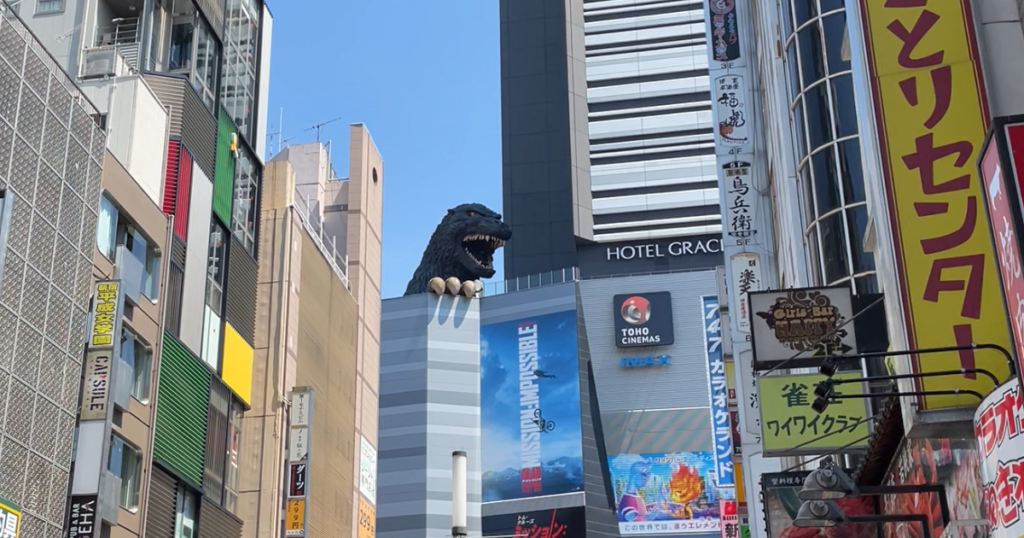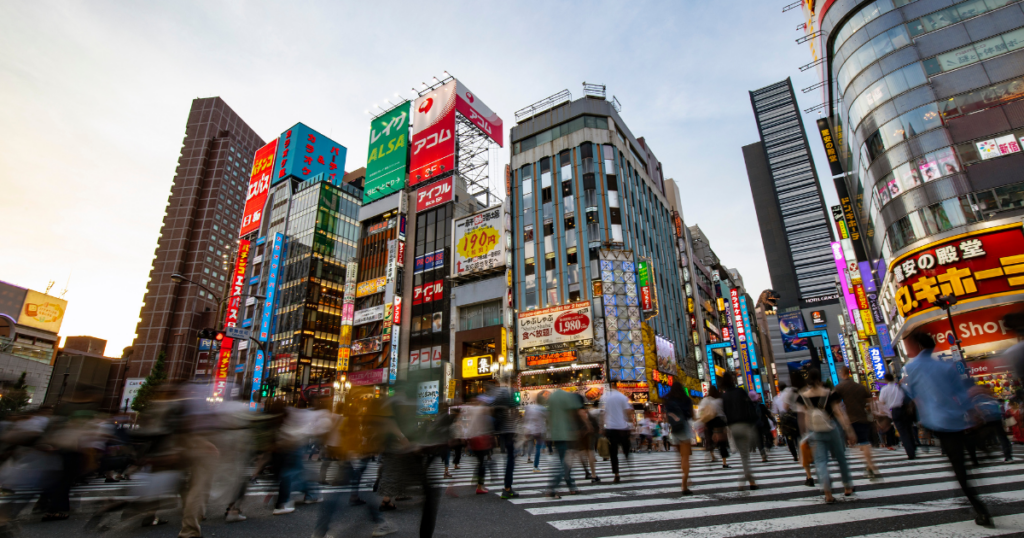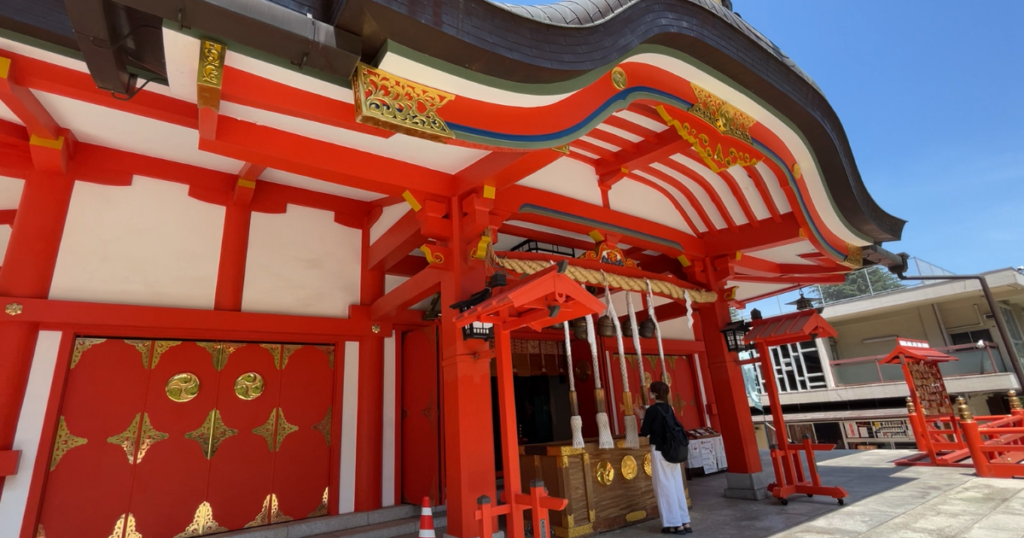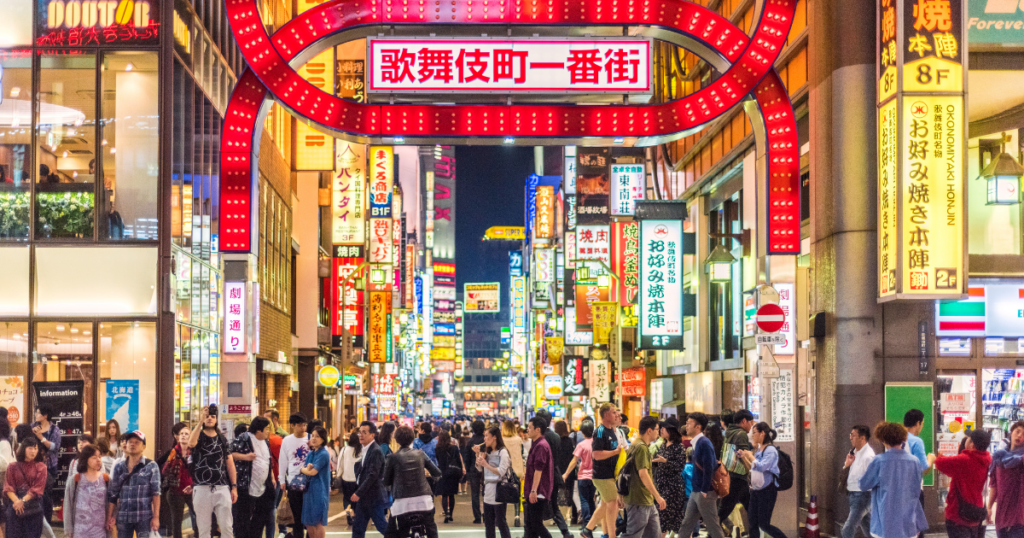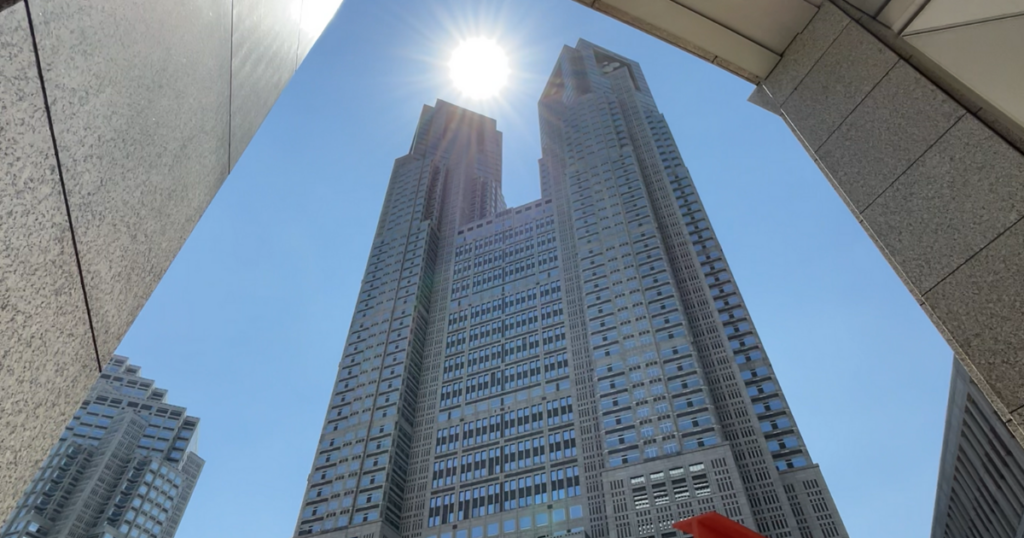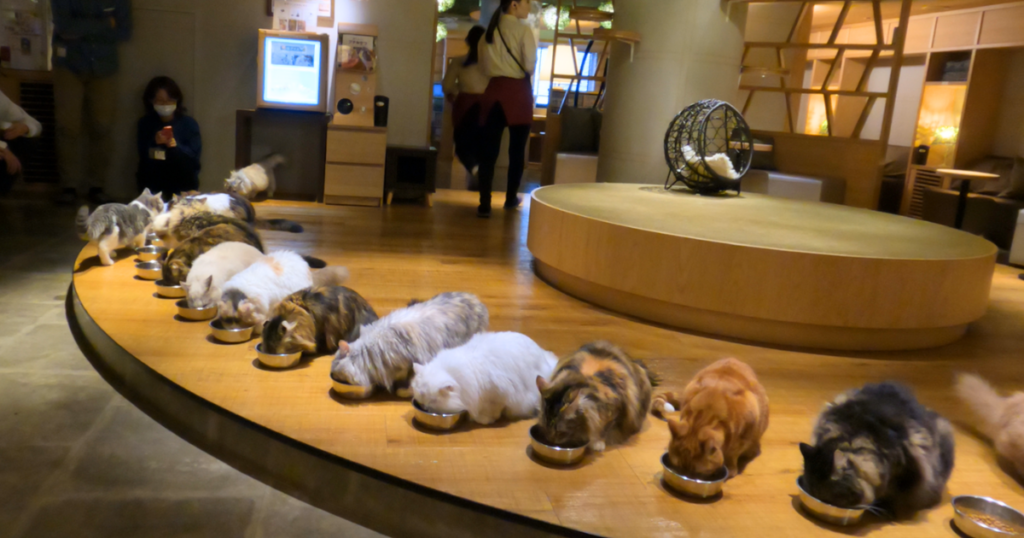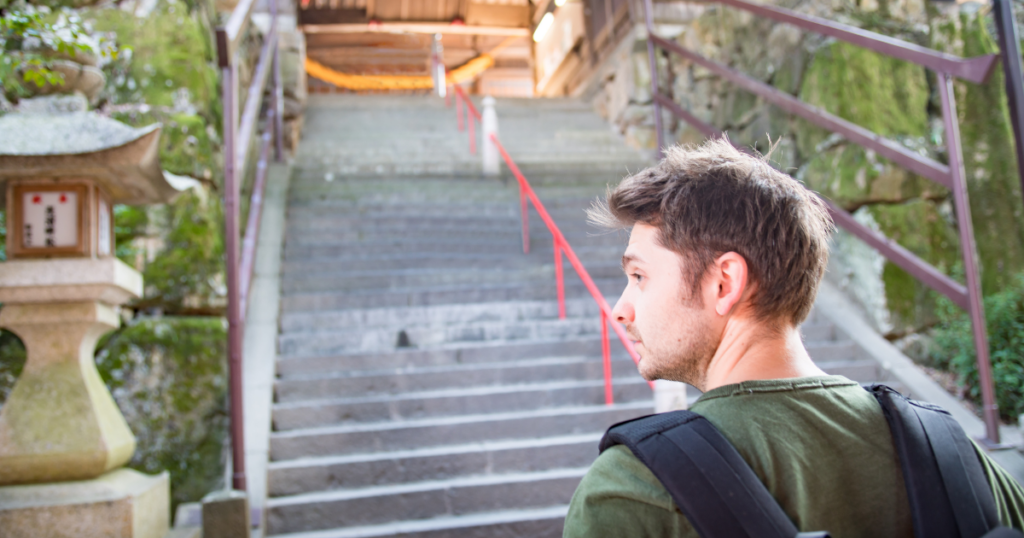Hanazono Shrine, nestled in Tokyo’s vibrant Shinjuku district, stands as a testament to Japan’s rich cultural and historical tapestry.
Serving as the guardian deity of Shinjuku, the shrine offers a serene sanctuary amidst the urban hustle.
Historical Background of Hanazono Shrine
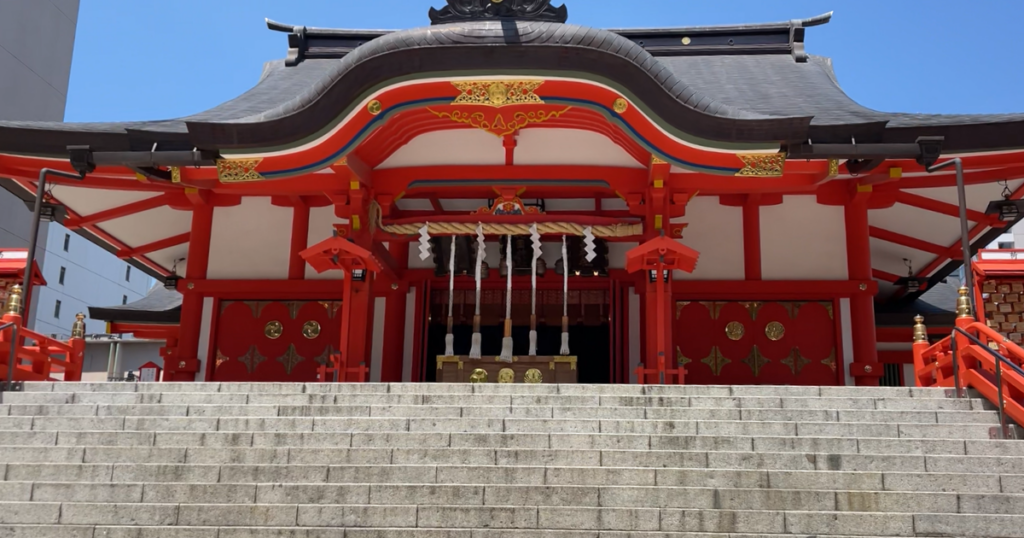
Established before the Edo period, Hanazono Shrine was originally situated approximately 250 meters south of its current location.
During the Kan’ei era, it was relocated to the gardens of the Owari-Tokugawa family, an area once renowned for its flourishing flower gardens.
This verdant landscape inspired the name “Hanazono,” meaning “flower garden.”
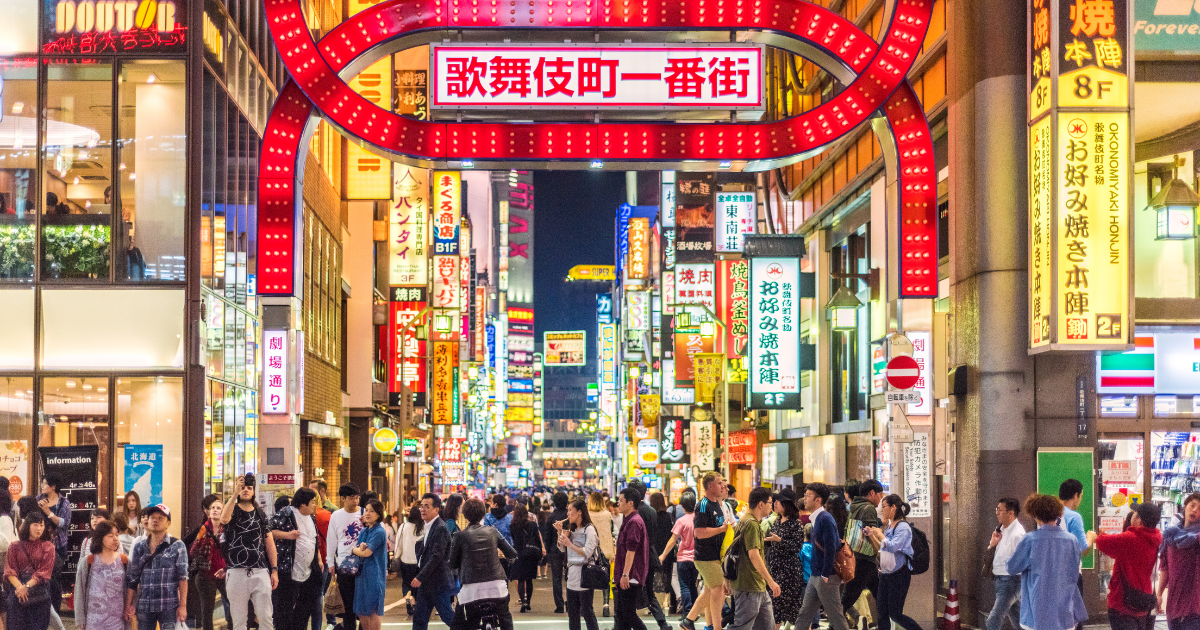
Architectural Features
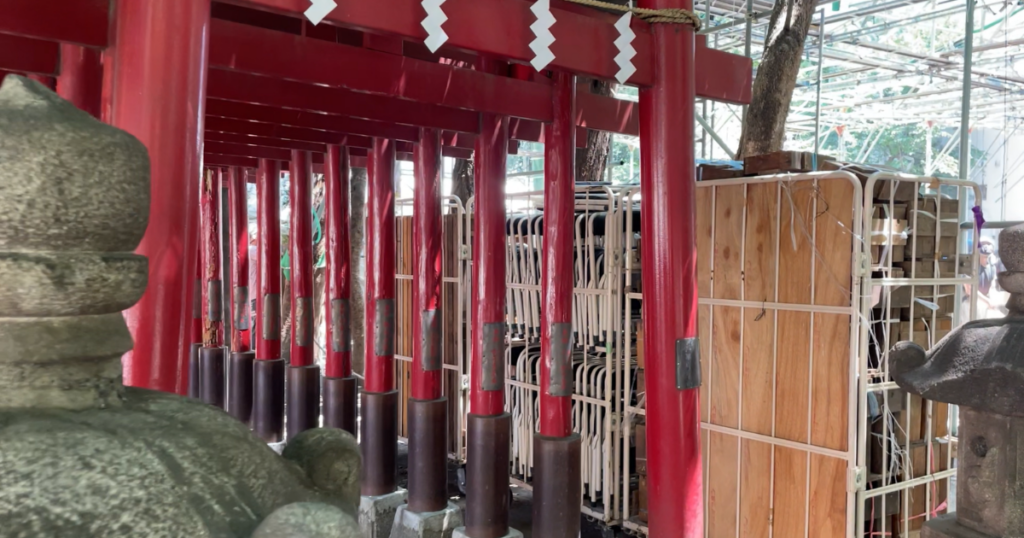
The shrine exemplifies traditional Shinto architecture, characterized by its vibrant vermilion structures and gracefully curved roofs.
Key components include:
- Torii Gate
The iconic entrance symbolizing the transition from the mundane to the sacred. - Haiden (Worship Hall)
The public area where visitors offer prayers. - Honden (Main Sanctuary)
The innermost sacred space housing the enshrined deity.
These elements collectively embody the spiritual essence and aesthetic principles of Shinto design.
Cultural Significance and Festivals
Hanazono Shrine is a vibrant hub of cultural activities, hosting several significant festivals throughout the year.
Reitaisai (Grand Festival)
Held annually in late May, the Reitaisai is the shrine’s most prominent festival.
The event spans three days, featuring over 100 booths offering traditional sweets and festival foods.
A highlight is the mikoshi (portable shrine) parade, where elaborately decorated mikoshi are carried through the neighborhood, creating a vivid contrast against Shinjuku’s modern backdrop.
Tori no Ichi (Rooster Market Festival)
Celebrated in November, the Tori no Ichi is one of the largest festivals of its kind in the Kanto region.
The shrine grounds are adorned with approximately 950 LED lanterns, and numerous stalls sell decorative kumade (bamboo rakes), believed to bring good fortune and business prosperity.
The festival operates from 10 am to 11 pm on designated days, with pre-festival events occurring the evening prior.
Visitor Information for Hanazono Shrine
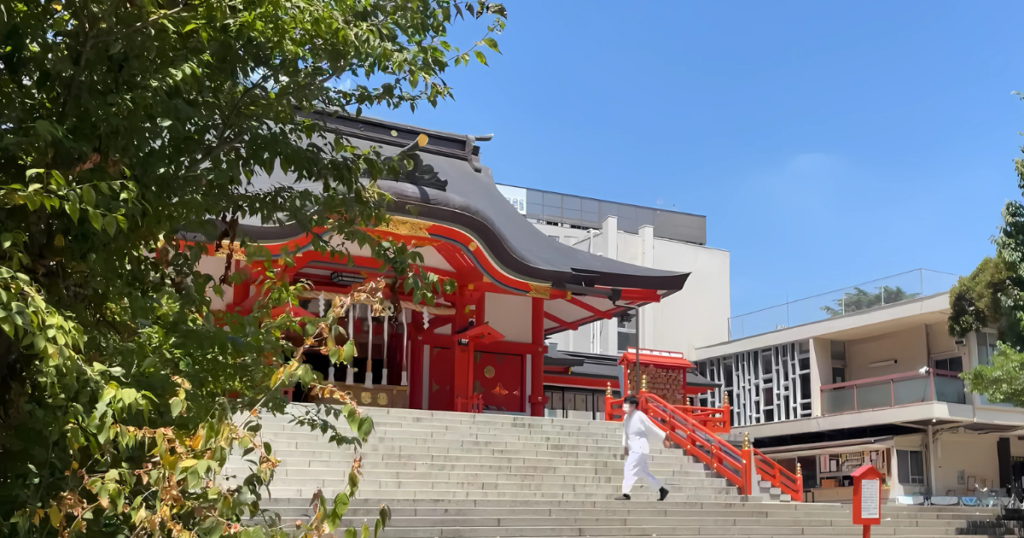
Hanazono Shrine is conveniently accessible:
- From Shinjuku Station: A 7-minute walk from the East Exit.
- From Shinjuku-sanchome Station: A 3-minute walk from Exit E2.
The shrine is open year-round, offering a tranquil retreat for both locals and tourists seeking a moment of reflection amidst the city’s dynamic environment.
Places to Explore near Hanazono Shrine
Visitors to Hanazono Shrine can also explore nearby attractions:
- Shinjuku Gyoen National Garden
A vast park blending traditional Japanese and French landscape designs, ideal for leisurely strolls. - Kabukicho
}Tokyo’s renowned entertainment and red-light district, bustling with nightlife and dining options. - Golden Gai
A network of narrow alleys famed for its numerous small bars, each offering a unique atmosphere.
Hanazono Shrine not only serves as a spiritual haven but also as a cultural landmark, bridging Tokyo’s historical heritage with its contemporary urban life.

